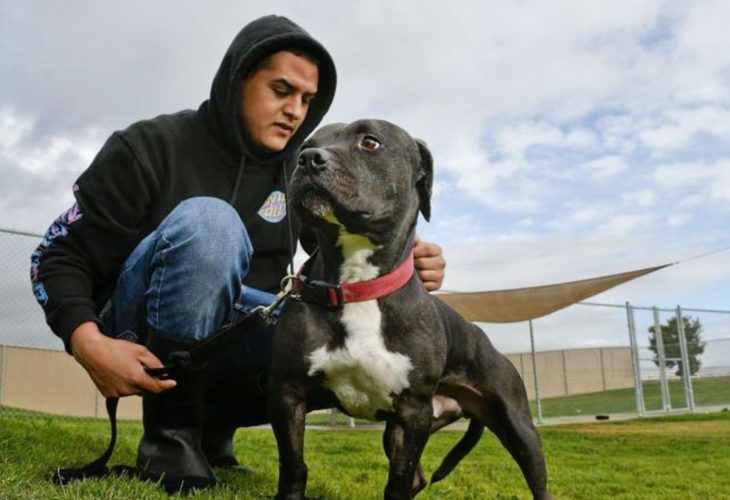Home for the Holidays: Adoption Trends for Dogs During the Holiday Season
December 9, 2024

Lompoc Record
By: Mike Hodgson
Published: January 17, 2022
Santa Barbara Humane, which operates a campus in Santa Maria as well as Santa Barbara, reported 1,263 animals were adopted and 20,204 received affordable and even free medical care through the organization in 2021. Of the animals that were adopted out, 669 found new homes through the Santa Maria shelter, said Marissa Miller, social media and branding coordinator for the organization. Those are just a few of the statistics that point to the success of the organization that, for the past two years, has provided humane services throughout the county after two humane societies serving the north and south joined forces.
Santa Maria Valley Humane Society merged with the Santa Barbara Humane Society to become Santa Barbara Humane in February 2020 — just as the COVID-19 pandemic struck. Due to business closures and job losses, an increasing number of pet owners found themselves in need of financial assistance, especially for veterinary care, and the number of animals in shelters swelled. In 2020, about 1,000 families benefited from the organization’s TLC Fund, which provides financial assistance for medical services and procedures. By 2021, that number had jumped to more than 2,300. The merger allowed the organization to meet increasing demands by sharing resources. What one shelter couldn’t provide, the other could.
“Up until recently, 80% of medical care was provided in Santa Maria,” said Sofia Rodriguez, chief philanthropy officer for the organization. “We were seeing people drive up from South County to get care in Santa Maria.”
That prompted the organization to expand the Santa Barbara clinic to handle such procedures as mass removals, excisions and dental work, Rodriguez said. More veterinary services were added in Santa Maria, as well. Last year, the Santa Maria campus alone conducted 1,727 medical exams, provided 4,235 vaccines, performed 2,631 spay and neuter operations, applied 2,233 flea-control measures and implanted 1,084 microchips among nearly 4,000 total applications of nearly a dozen other services. Families who could no longer care for their pets surrendered 827 of them to the two open-application shelters that try to find homes for animals regardless of their age, health or prior circumstances.
“Santa Maria has seen a huge spike in owner surrenders, especially shepherds and huskies,” Rodriguez said, noting both breeds are very popular in the North County.
“With huskies, people adopt these cute little fur-ball animals,” she explained. “But they grow up to be big, strong dogs — not just physical but mentally, strong-willed.”
They and shepherds are also “working dogs” and need a lot of exercise, and they require specialized training from other more passive dogs.
Last June, Santa Barbara Humane opened a new training facility in Santa Maria and recently added training courses for those two breeds as well as puppy classes in addition to the Refined Rover, Reserved Rover and Reactive Rover courses.
Miller said in 2021 the humane organization provided free or low-cost behavior training to 761 dogs, with 65 of those educated at the Santa Maria training facility.
Ultimately, Santa Barbara Humane’s goal is to keep animals alive and place them in loving homes, and in 2021 it achieved a live release rate of 96%.
The national average is 89%, according to a study commissioned by Shelter Animals Count, a neutral, independent nonprofit agency created to share and steward the National Database of Sheltered Animals, which provides facts and insights to save lives.
Miller attributed all those successes to Santa Barbara County residents’ support of the nonprofit organization, which is not affiliated with any regional or national animal welfare organization and operates strictly on donations from local individuals and businesses.
